The Justice Business
The appearance of extreme political impropriety is sometimes just too extreme, according to the Supreme Court's 5-4 ruling in a case that shines a brutal light on the spiral of campaign contributions that threaten to compromise too many state courts.The appearance of extreme political impropriety, the Supreme Court has decided, is sometimes just too extreme.
The circumstances of West Virginia’s chief justice, who refused to remove himself from deciding a case involving the company of a political contributor, is an “exceptional” example of why appearances count, according to the high court’s 5-4 ruling in a case that shines a brutal light on the spiral of campaign contributions that threaten to compromise too many state courts.
The case began with an aggrieved coal company owner who was angered by a lower court decision that had ordered him to pay $50 million in damages to competitors for fraudulent business practices and other malfeasance.
Don Blankenship, chief of A.T. Massey Coal Co., spent $3 million to defeat an unfriendly Democratic judge and elect Republican Brent D. Benjamin as a replacement who would be expected to rule on the appeal. Blankenship got what common sense suggests he paid for: Benjamin refused to recuse himself from deciding the case and twice voted to overturn the verdict that would have cost his political benefactor’s company so much money.
“Although there is no allegation of a quid pro quo agreement, the fact remains that Blankenship’s extraordinary contributions were made at a time when he had a vested stake in the outcome,” Justice Anthony M. Kennedy wrote for the majority. “Just as no man is allowed to be a judge in his own cause, similar fears of bias can arise when — without the consent of the other parties — a man chooses the judge in his own cause. And applying this principle to the judicial election process, there was here a serious, objective risk of actual bias that required Justice Benjamin’s recusal.”
The contributions in this case surely were extraordinary. Blankenship, by Kennedy’s account, spent more than the total amount expended by all other supporters of Benjamin — and three times the amount put forth by Benjamin’s own campaign committee.
Yet there is nothing extraordinary anymore about the enormous sums of money being funneled into state judicial elections. “Big money is changing the character of judicial election campaigns,” the Brennan Center for Justice at New York University Law School concluded in a research paper last year. “These campaigns are now high-stakes contests in which chambers of commerce, tort reform lobbyists, organized labor, plaintiffs’ lawyers and other, often much narrower interest groups spend substantial resources — frequently without disclosing the sources of their funding.”
Only about a fifth of states with contested supreme court elections saw the use of television advertising in 2000. But in 2008, according to a Brennan Center draft report on more recent developments, television ads were aired in more than 85 percent of the judicial contests. And where there are television ads, there is money: About $19 million was spent on judicial election television ads last year, more than in any year except 2004, when there were more contested races.
Not only are ads becoming more prolific and expensive. They are becoming nastier. “These ads are going deeper and deeper into the mud,” says Adam Skaggs, a counsel to the Brennan Center who has worked on the issue.
So what’s the difference between the money and ad wars common in races for governor, legislatures, Congress and the presidency and those for state judgeships? Increasingly, the public sees none. This is the problem.
The courts are supposed to be the branch of government that is removed from politics, not awash in them. They are the forums to which individuals who are increasingly — and justifiably — cynical about lawmakers in both parties and at all levels of government should be able to turn for a fair hearing of a dispute, and a ruling made on the merits.
Yet even a survey of 2,428 state court judges published by the Brennan Center last year shows that jurists themselves don’t really believe campaign contributors have no influence over them. Nearly half of the judges said contributors have “a little” to “a great deal” of influence on their decisions. With 39 states now electing judges, the threat to impartial justice is frightening.
The Supreme Court’s ruling in the West Virginia case sets only the broadest parameters for judges who should consider removing themselves from cases. It would be better if states established impartial panels, perhaps of retired judges, to decide all requests for a judge’s recusal.
The alternative is the unreasonable and unpalatable probability of more outrageous examples of conflicted — and compromised — justice.
Marie Cocco’s e-mail address is mariecocco(at)washpost.com.
© 2009, Washington Post Writers Group
Your support matters…Independent journalism is under threat and overshadowed by heavily funded mainstream media.
You can help level the playing field. Become a member.
Your tax-deductible contribution keeps us digging beneath the headlines to give you thought-provoking, investigative reporting and analysis that unearths what's really happening- without compromise.
Give today to support our courageous, independent journalists.
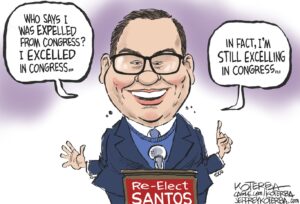
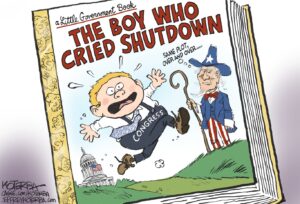
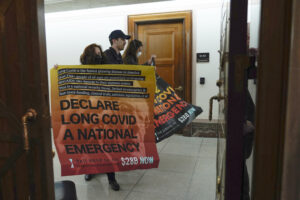

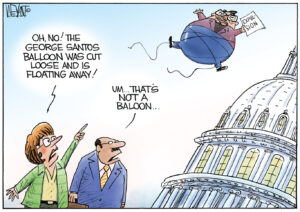
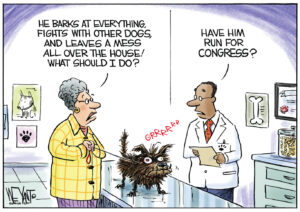
You need to be a supporter to comment.
There are currently no responses to this article.
Be the first to respond.